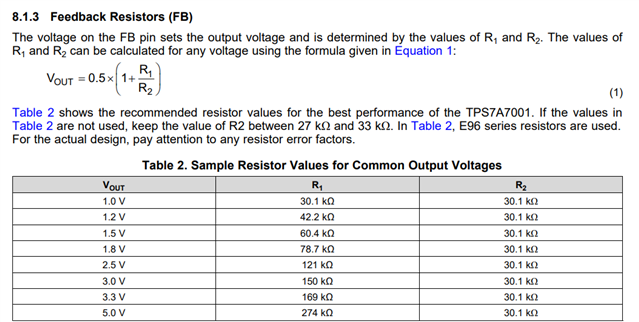Tool/software:
Hi,
I am using TPSTA7001 LDO in my design and referring to the datasheet for selecting feedback resistors. The datasheet recommends choosing R2 between 27K and 33K when setting the output voltage.
I would like to understand:
1.What is the reason for this specific range?
2.What happens if I choose a value outside this range?
I have attached a snapshot from the datasheet for the reference.

I appreciate any insights on this. Thank You

